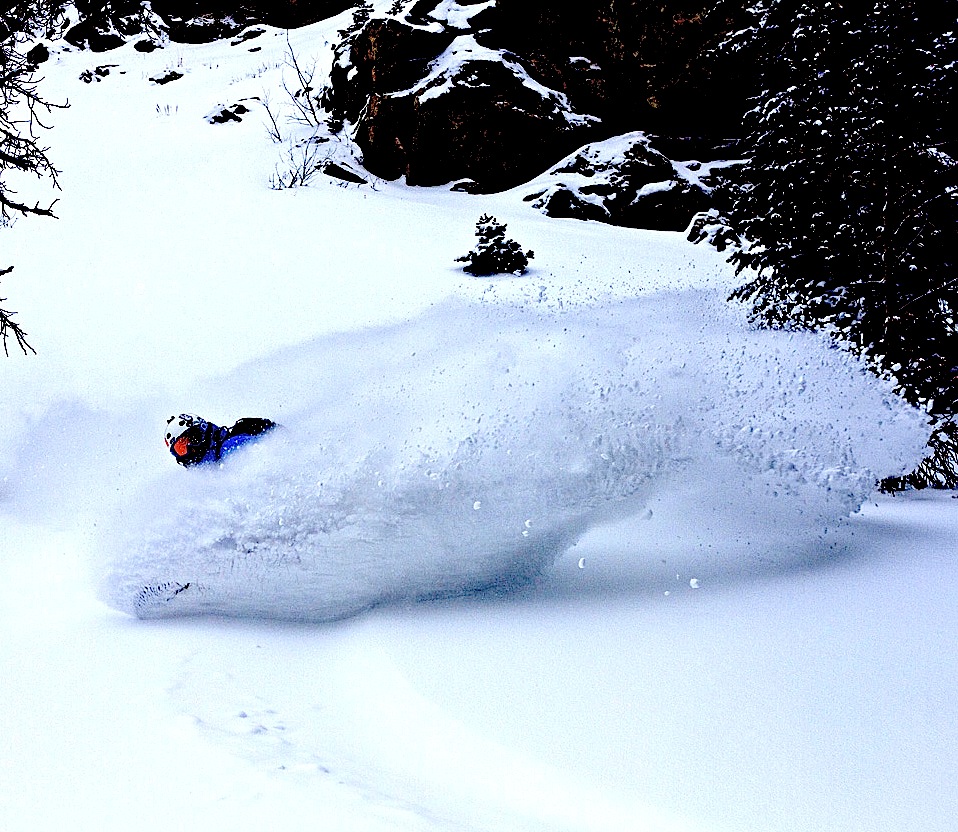
Brought to you by Monarch Mountain
Monarch Mountain leaves no trace. There is no doubt this ski area intimately understands the land in which they operate. They actively seek to make the environment a better place for future generations. Their core values and ideology below is strong proof of this.
Some genuinely passionate staff members approached me the other day about what we are doing about reducing our “Carbon Footprint.” The question alone immediately told me that we haven’t been communicating well enough to all of our constituents about what we are doing, or, in most cases, what we are not doing. The word Recycle is what most of us glom onto when discussing how we affect the environment. I often hear other corporations and even some friends and family members, point to the giant piles of objects they are recycling. Yet, what has always bothered me about that is that it is more important to strive to reduce the amount of what one needs to recycle in the first place. Monarch, for example, is one of the last remaining ski areas in the country that does not make snow in order to operate. Take a moment to think about that. Think about the amount of water, electricity, and manpower needed to simply make fake snow. Snowmaking also involves the installation of miles of hoses and large blowers, all of which need to be manufactured and fueled. This is the single number one thing that we do to reduce our footprint. We also have replaced all of our lighting to LED to reduce our energy consumption. During our low volume periods we shut down some of our lifts, for the same reason. With the improvements we made in 2015, our heating and cooling systems are fully automated and can be maintained offsite through a computer. This allows us to reduce heating needs during off hours. Many of you are already aware that we are currently investing upwards of 2 million dollars in reducing the beetle-infested trees from the forest within our boundary. This isn’t just for aesthetics. It is to reduce the risk of forest fires by eradicating the easy fuel provided by the dead timber. This, of course, reduces the need for fire fighters having to put themselves in harm’s way as well. It has been helpful in increasing our skiing terrain too. Best of all, we milled the dead timber and used it to build snow fencing … effectively reestablishing one of its main purposes as a wind break.
Wherever we can we attempt to ReUse as well. This one is hard to do, but we try our best. We have implemented discount initiatives for guests and employees to use their own vessel for drinking to reduce the need for purchasing more bottles. We encourage all to use our hydration stations rather than purchase bottled water. The Sidewinder Saloon uses real china to reduce the need for paper plates. This has proven challenging in the cafeteria environment where the volume is harder to keep up with. At the very least those ugly disposable plates provided are made of corn products and are biodegradable. We still look at ways to improve here by reducing the need for a plate at all, by using wraps.
Finally, we recycle over two tons of cardboard each year. We also encourage all guests and employees to use the recycling centers we have throughout the campus. All glass, aluminum, and paper products are taken to state recycling centers on a regular basis. Any steel or metal that becomes unusable for our needs is taken to recycle centers in Pueblo. Together with changed motor oils, we recycle all of our canola oil products used in frying and cooking and use them for heating the Vehicle Maintenance facility. We purchased a recycled-oil burner heating unit for this facility just for this purpose. In addition, we keep our grooming and tour cats all from the same manufacturer so that we can reuse and interchange parts before needing to purchase new parts.
The term carbon footprint connotates one’s actual location, like the image of a footprint. In actuality it is much more involved than that. At what point do our actions start affecting the climate? The majority of our guests, for example, come from within a two-hour drive. A smaller amount come from within an 8-hour drive. Very few come from overseas or across the country who fly on large planes, rent cars, need extended lodging, and so forth. The effect on our environment comes from the moment guests get in their plane and/or car and drive to our location, as well as the time they spend in hotels and restaurants, all of whom create their own footprint. The army of marketing and salespeople employed to encourage these travelers to do all of that leave their own footprint. There isn’t such a thing as just one footprint. It is lots of footprints braided together. So, I’d say in comparison to other resorts who rely on destination visitors from long distances, we are doing quite well.
All in all, although we may have a large presence, we are diminutive by nature, and that is by design, so the footprint we leave behind is much harder to see. Our moto is to keep it simple and real. No need for heated outdoor plazas, or high-speed bubble chairs with heated seats. Let’s stay focused on what leaves no footprint at all; a ski
– Randy Stroud, Monarch Mountain General Manager
All in all, Monarch Mountain is a leading independent ski area that practices sustainability in all aspects of operation. Let’s face it, typical ski resorts do not get a good rap for their impact on the environment and in this day and age, the simple “reduce, Reuse, Recycle” efforts are not sufficient. However, Monarch Mountain at its core understands the environmental context in which it operates. They seek to not make any change to the environment while simultaneously making it a better place for future generations.




